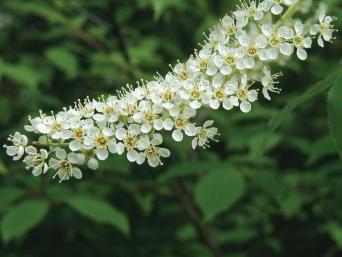
Combat Climate Change By Going Native With Your Plants

With climate change barreling down on us and April’s celebrations of the 50th anniversary of Earth Day reminding us of the importance of individual and collective action, there’s one hugely powerful way folks in yards across the region can cool the climate and protect the planet’s biological diversity: we can plant native.
Native plants evolved over millennia to live in this time and this place. They’re the ones you see while walking the Wissahickon and along the Schuylkill Center.
Trees, as you likely know, absorb carbon dioxide like sponges and turn that carbon into wood that stays in the tree for the next century. Planting trees cools the climate and cools your home.
Climate change is supercharging our storms, pouring more stormwater into our city, compromising our combined sewer systems and eroding our green spaces. Mature trees are massive umbrellas over the land that trap rainfall. It takes a long time for rain to work its way down through a network of millions of leaves, and its roots absorb that water like a massive underground sponge. Planting trees also mitigates excessive stormwater.
A native white or red oak supports thousands of species of insects, including hundreds of caterpillars of different moths and butterflies. Same with the wild black cherry tree, a flowering tree with leaves that caterpillars devour and flowers that offer nectar for butterflies. Those flowers mature into fruit that birds crave. Plant one cherry alongside one oak, and you are feeding 1,000 species of butterflies and moths.
Butterfly and moth caterpillars become crucial food that robins and wrens need to feed the babies they are raising in their nests atop those trees. Even seed-eating birds like sparrows feed bugs to their nestlings to get them the protein they need. Want birds in your yard? You need native plants.
Since they evolved here, native plants normally require far less water than Home Depot-purchased, tropically-adapted begonias and impatiens. With natives, you are less likely — until that drought or heat wave comes — to be standing out in the evening watering them.
Also, begonias are annuals, and not adapted for surviving our winters. Native plants are typically perennial, coming back stronger and larger the next year, thus saving you money. You may even need to thin them and transplant portions elsewhere in your garden, saving you more money.
In summary, native plants combat climate change, cool your home, stop stormwater, protect biological diversity, feed baby birds, save you money, and grow back stronger every year. Good deal, no?
So get impatient with impatiens; begonias, be gone! To honor the 50th anniversary of Earth Day, commit to planting a native tree and surrounding it with wildflowers.
From April 25 through May 2, the Schuylkill Center conducts our Spring Native Plant Sale, offering thousands of stunning plants — everything from gorgeous spring ephemeral wildflowers like trout lily and trillium to the cherries and oaks we noted earlier. We’ve got special workshops and speakers throughout the week as well, so check out our website to find out what’s happening.
I’m leading a Wildflower Walk on the second Saturday of the plant sale, May 2, at 10 a.m. So come for a walk with me to meet these beauties in person and hear their extraordinary stories.
Mike Weilbacher can be reached at mike@schuylkillcenter.org, and tweets @SCEEMike.
